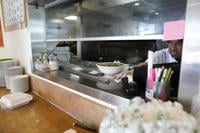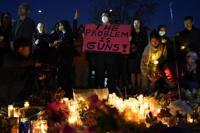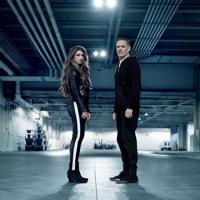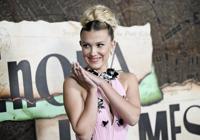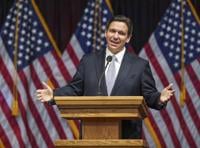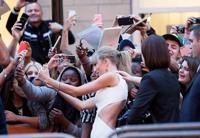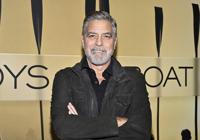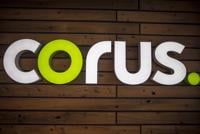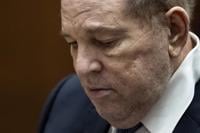MONTEREY PARK, Calif. (AP) — For decades, Monterey Park has been a haven for Asian immigrants seeking to maintain a strong cultural identity — and a culinary heaven worth visiting for anybody near Los Angeles craving authentic Asian cuisine.
Signs across the vibrant suburb are written in English and Chinese. Families raise bilingual children. And residents in their golden years enjoy karaoke, the Chinese tile game mah jong and — as the outside world learned last week after a horrific mass shooting — ballroom dancing.
“It’s a very quiet, humble place. And we mind our own,” says Denny Mu, a second-generation American who runs the popular Mandarin Noodle House started by his grandfather.
That sense of peace was shattered after a gunman killed 11 people in their 50s, 60s and 70s and wounded nine others last Saturday during a Lunar New Year celebration at the Star Dance Ballroom. But while residents of the tight-knit community work through the trauma — just as they did during the coronavirus pandemic, when anti-Asian sentiment rose nationwide — the tragedy has only sharpened their feelings about what makes Monterey Park so special, and worth protecting.
Kristina Hayes, who started staging tango events at Star Ballroom when the studio reopened after the pandemic, said dance is “hugely important” for Monterey Park’s seniors.
“It’s a pastime, hobby and even competitive — but in the best way possible.”
Mu, whose restaurant is known for its scallion pancakes and beef noodle soup, said he has no plans of leaving Monterey Park, and believes the slowdown in visitors over the past week will be fleeting.
“It’s the food mecca, especially if you like any sort of Asian food,” said Mu, who is Chinese.
Monterey Park’s transformation to a predominantly Asian city was the brainchild of Fred Hsieh, a Chinese immigrant who was also a savvy real estate developer. He is credited with first coining the city’s nickname of the “Chinese Beverly Hills.” In the ’70s and ’80s, he used that phrase in Asian newspapers abroad to lure people from Hong Kong and Taiwan to the land of opportunity. He cleverly highlighted the city’s area code, 818. In Chinese culture, the number eight is seen by some as a symbol of prosperity and good fortune.
When Hiseh died in 1999, Monterey Park had at the time become the only U.S. city with an Asian-majority population, with 65% Asian residents, according to an Associated Press obituary. Today, nearly 70% of the residents are Asian, mostly of Chinese descent.
As residents deal with the shock and grief that the shooting brought, they hope people will continue to see the city of about 60,000 for the vibrant community it is.
The backstory of Mandarin Noodle House, which at 43 years old remains one of the oldest restaurants in Monterey Park, is the story of many Asian immigrant families who have stayed faithful to the community and elevated it beyond some cookie-cutter suburb. For decades, the city has been revered as the flagship location in Southern California for authentic Asian food, particularly Chinese cuisine from various regions.
For the 36-year-old Mu, the regular customers at Mandarin Noodle House are one reason he can’t see himself leaving Monterey Park.
“It’s nice to go to a restaurant and ask the customer ’How was your day? How was your kid’s dance recital? ... All that stuff,” Mu said. “It’s all about community.”
Hayes said her specialty over the years has been creating dance programs for seniors, especially for those who have lost mobility or have dementia. Some dedicated dancers who came to the ballroom showed up after work and on the weekends.
“In the Asian American community across the country, seniors have kept ballroom dancing alive,” said Hayes, who is white.
Betina Hsieh, a second-generation Taiwanese American and an associate professor at Cal State Long Beach’s College of Education, knows at least one person whose parents went to Star Ballroom. Dance halls and churches in Asian communities have traditionally been safe spaces for older people.
“There is a big separation or tension between immigrant parents and people like me who are second generation,” Hsieh said. “Our families bought into this idea of helping us kids assimilate. But, they remained in their ethnic enclaves and mingled among themselves, which means they have limited spaces to gather as they age.”
Kevin Mok, 32 and of Chinese descent, runs Japanese dessert shop Mr. Obanyaki with his parents and brother. Since the shooting, he said he still feels “there’s a sense of fear in this community," because there are less people on the streets.
“It’s quieter than usual,” Mok said, while eating lunch at Mu's restaurant. “I feel like my sales have dropped like 15 to 20% at night. Hopefully, it'll come back."
The gunman — a 72-year-old Asian man known in the community — shot and killed himself.
Hsieh, the professor, grew up in Santa Clarita, but has deep connections to Monterey Park. Her grandparents lived there or went there for doctor’s appointments because it was the only place they could find Mandarin-speaking physicians.
“It was the first ‘ethnoburb’ in Southern California for Asians,” Hsieh said. “Monterey Park was this place we had before we even knew how to have an Asian American identity, a place where our families could gather and stay connected to their home and culture.”
Immigrant-run restaurants and shops flourished in the burgeoning ethnoburb because immigrants are the least likely group to tolerate watered-down versions of their food.
“Within five minutes I can get access to all the good food," said Yvonne Yiu, a former Monterey Park mayor. “Because they are very competitive, they have to be good. A lot of people travel far away to Monterey Park to eat and dine.”
Ballroom dancing is also embedded in the city's culture, and Hayes of Star Ballroom is confident the community will rekindle its dance-floor joy.
“People are going to come, and they are going to dance again,” she said.
___
Bharath reported from Los Angeles. Tang is a writer on AP's Race and Ethnicity team. Follow her on Twitter at .


